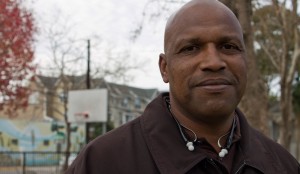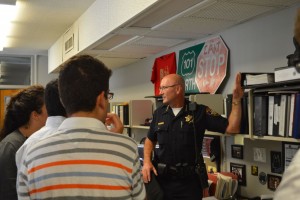From “piece of shit” to somebody
August 6, 2015The talk given to us by Mr. Willie Stokes was very powerful for me. To hear from a former gang leader about his life transformation was utterly inspiring for me. Often times, as part of the general public, we simply castigate gang members for the violence and destruction that they cause… and with good reason, they cause insecurity, deaths, and lives broken. However, it made me think about whether crime is a product of structural violence.
Hearing Mr. Willie’s story starting from his childhood to now. At a very young age, one can decipher that life wasn’t made for him. He didn’t have a robust support network that an average American family has. I compared his situation from an average American family because I want to take into account the “relative deprivation” that Mr. Willie and young boys like him must consistently battle. When you have default circumstances that are in bad conditions, the natural result is for that young kid to live a challenging life.
Recently, I have been reading about the battle that children from grave circumstances have to fight. These articles that I have attached talk about the small minority of overachieving children from extremely grim backgrounds but manage to “beat the odds” and attain success in their lives. The small minority of “shining stars” is doing well in school. Their mental health is good. They have no trouble with the law, no trouble with substance abuse. However, it doesn’t come without a price. According to recent research, these achievements come at the expense of these children’s health. Measuring DNA methylation, researchers found that in disadvantaged communities, the cells of children who exhibited more self-control (and became more successful) visibly aged faster than the cells of children who maintained the status quo. In short, the most upwardly mobile kids were the most physically unhealthy.
After hearing about Mr. Willie’s life story, society shouldn’t be surprised that he ended up in the path that he was in – “a piece of shit” (from his own words). From the beginning, his life was unfortunately set up to end up that way. Sadly, Our society does not have enough resources and infrastructure to assist the necessary transformation of children from less fortunate circumstances. Hence, I see it as structural violence because some people are “born” to have a crime-ridden life due to their circumstances. Although one can argue that there are some exceptions to this linear process I am talking about, these research suggests that these exceptions, the “shining stars”, are not fully liberated from their less fortunate backgrounds. Their lives might seem to be in “order” but they are paying the price in terms of their health. Essentially, children from less fortunate backgrounds, such as Mr. Willie, have a very difficult choice to make – either they live an orderly life or a healthy life. I don’t think anyone should have to choose.
Mr. Willie inspired me profoundly. He was able to turn his life around and now he works to educate the youth, to steer them away from gang violence, and eventually turn them into “shining stars”. I admire Mr. Willie for his work even if it puts him in a extremely perilous position. He justifies his cause by saying, “if he was willing to die for the gangs, then he is willing to die for this cause.”
Recent articles regarding the choice (success vs. health) that children growing up from less fortunate backgrounds have to make:
http://www.huffingtonpost.com/entry/the-danger-of-skin-deep-resilience_55a7c87ce4b0c5f0322c76ed



 Posted by Julmar Carcedo
Posted by Julmar Carcedo




